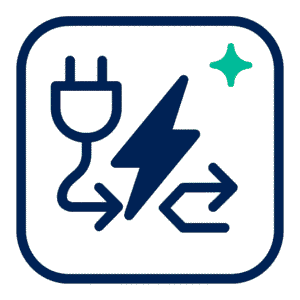What the College Board requires and why that matters for forecasts
The exam structure is simple and stable. “The AP Chemistry Exam has two sections. The first section contains 60 multiple-choice questions. The second section contains seven free-response questions.” See AP Central: https://apcentral.collegeboard.org/courses/ap-chemistry/exam.
The College Board’s public guidance summarizes the scoring pipeline succinctly: “For most AP Exams, your score is a weighted combination of your scores on the 2 sections, multiple choice and free response.” See AP Students: https://apstudents.collegeboard.org/scores.

Two practical implications follow. First, a practice forecast must start with two precise inputs: MCQ correct count (out of 60) and summed FRQ rubric points (scored against the College Board rubrics). Second, an accurate forecast needs to model the weighting and the College Board’s equating step; the equating step is applied centrally and varies by form, so external converters are predictive models rather than authoritative cutoffs.
For public calibration points, use the College Board’s annual distributions. For example, the global AP Chemistry distributions show consistent percentages near these values for recent years: 2025 — 5 = 17.9%, 4 = 28.6%, 3 = 31.4% (3+ = 77.9%); 2024 — 5 = 17.9%, 4 = 27.4%, 3 = 30.3% (3+ = 75.6%). These distributions are the targets that classroom ap chemistry score predictor online tools align to when they produce estimated thresholds. See AP Students: https://apstudents.collegeboard.org/scores.
The minimal reproducible estimator (how to convert a practice run to a forecast)
A defensible, transparent estimator — the one used by most teachers and by many online ap chemistry grade estimator widgets — follows these steps.
- Record raw results precisely.
MCQ_correct= number correct out of 60.FRQ_points= sum of rubric points (score each FRQ using the official scoring guidelines and record the total). Use AP Central rubrics when scoring. https://apcentral.collegeboard.org/courses/ap-chemistry/exam.
- Convert to section percentages.
MCQ_pct = MCQ_correct / 60FRQ_pct = FRQ_points / FRQ_max(FRQ_max is the sum of the per-question maxima listed in the scoring guidelines).
- Apply an explicit weighting. For quick forecasts many instructors use a 50/50 operational weight:
composite_pct = 0.5 * MCQ_pct + 0.5 * FRQ_pct. Tools labelled ap chem exam scoring weights often let users vary this parameter. - Map composite_pct to the 1–5 scale. Convert the composite percentage into a predicted 1–5 result using a calibrated mapping. Calibrations are often heuristic or empirical; report an uncertainty band rather than a point estimate. Many ap chem raw points converter and ap chemistry free response estimator utilities automate this workflow.
This reproducible pipeline is the operational heart of classroom spreadsheets and public calculators that predict AP chemistry 1-5 score.
Example (worked) and sensitivity analysis
A worked example clarifies the arithmetic and shows how marginal improvements change the prediction.
MCQ_correct = 40/60→MCQ_pct = 0.667.FRQ_points = 44ofFRQ_max = 56→FRQ_pct = 0.786.- Composite (50/50):
composite_pct = 0.5*(0.667) + 0.5*(0.786) = 0.7265→ 72.65% composite.
A calibrated classroom mapping might place a composite in the low 70s near the 4–5 threshold in many years, but precise mapping varies by year and calibration sample. The most actionable output for the student is sensitivity: determine how many additional MCQs or FRQ rubric points would push composite_pct above the next threshold. For the example above, converting 2 additional MCQs to correct increases MCQ_pct by 2/60 = 0.0333, thus composite_pct increases by 0.0167. Earning 3 more FRQ rubric points increases FRQ_pct by 3/56 = 0.0536 and composite_pct by 0.0268. Presenting these marginal returns is the primary function of calculators that predict AP chemistry 1-5 score.
How to score FRQs reliably in practice
- Use official scoring guidelines. The College Board provides question-by-question rubrics and sample responses; use those when assigning rubric points. https://apcentral.collegeboard.org/courses/ap-chemistry/exam.
- Score parts discretely and document partial credit. Record each rubric element earned so re-scoring or reconciliation is possible.
- Double-grade when feasible. A second independent grader or teacher review reduces random grader error; reconcile differences by reference to exact rubric text.
- Log FRQ_max and check arithmetic. Confirm the total possible FRQ points from the current-year guidelines before computing FRQ_pct; many ap chemistry free response estimator tools assume the current FRQ_max but it must be verified.
Choosing and using calculators: practical guidance
- Prefer tools that expose the weighting parameter (the ap chem exam scoring weights) and allow changing FRQ_max if needed.
- Validate a chosen ap chemistry score predictor online by running it on several past released practice forms and checking whether predicted distributions of 3+/4/5 roughly match College Board distributions for the target year; use the College Board’s published score distributions as targets. See AP Students: https://apstudents.collegeboard.org/scores.
- Avoid blind reliance: treat outputs as planning aids. Use the projection to prioritize study (which MCQ subjects to practice; which FRQ parts to rehearse), not as a final verdict.
Common errors students make and how practice tests correct them
- Overconfidence from untimed practice. Timed conditions change both MCQ accuracy and FRQ clarity; always run at least one timed full-length practice to obtain baseline signals comparable to exam-day performance.
- Under-scoring FRQs. Treat rubrics as checklists and give partial credit where the rubric requires it; being overly harsh on self-scored FRQs underestimates composite_pct.
- Ignoring sensitivity. A single extra MCQ or a small FRQ gain can move a projection across the threshold—identify those marginal improvements and prioritize them in the final weeks of study.
Sources, rubrics and authoritative references
- AP Central — official AP Chemistry exam page and scoring guidelines (official rules and rubrics): https://apcentral.collegeboard.org/courses/ap-chemistry/exam.
- AP Students — official annual score distributions (calibration targets for predictive models): https://apstudents.collegeboard.org/scores.
When selecting an ap chemistry score calculator 2025, verify the tool’s documentation and ensure it references official rubric maxima and current-year distributions.
Final Considerations
Practice tests translate study into measurable metrics. The recommended operational workflow is: (1) perform a timed, full-length practice exam; (2) score the MCQs and FRQs using College Board materials; (3) compute MCQ_pct and FRQ_pct and derive a composite_pct using explicit weights (many instructors start with 50/50); (4) map the composite to a probabilistic 1–5 forecast using a calibrated mapping; and (5) use sensitivity analysis (how many MCQs or FRQ points change the predicted band) to allocate remaining study time. Use authoritative College Board resources for rubrics and distributions, and use external ap chem raw points converter, ap chemistry free response estimator, or ap chem multiple choice to score tools only as scenario-analysis aids, checking their assumptions against official documentation before making high-stakes decisions.






